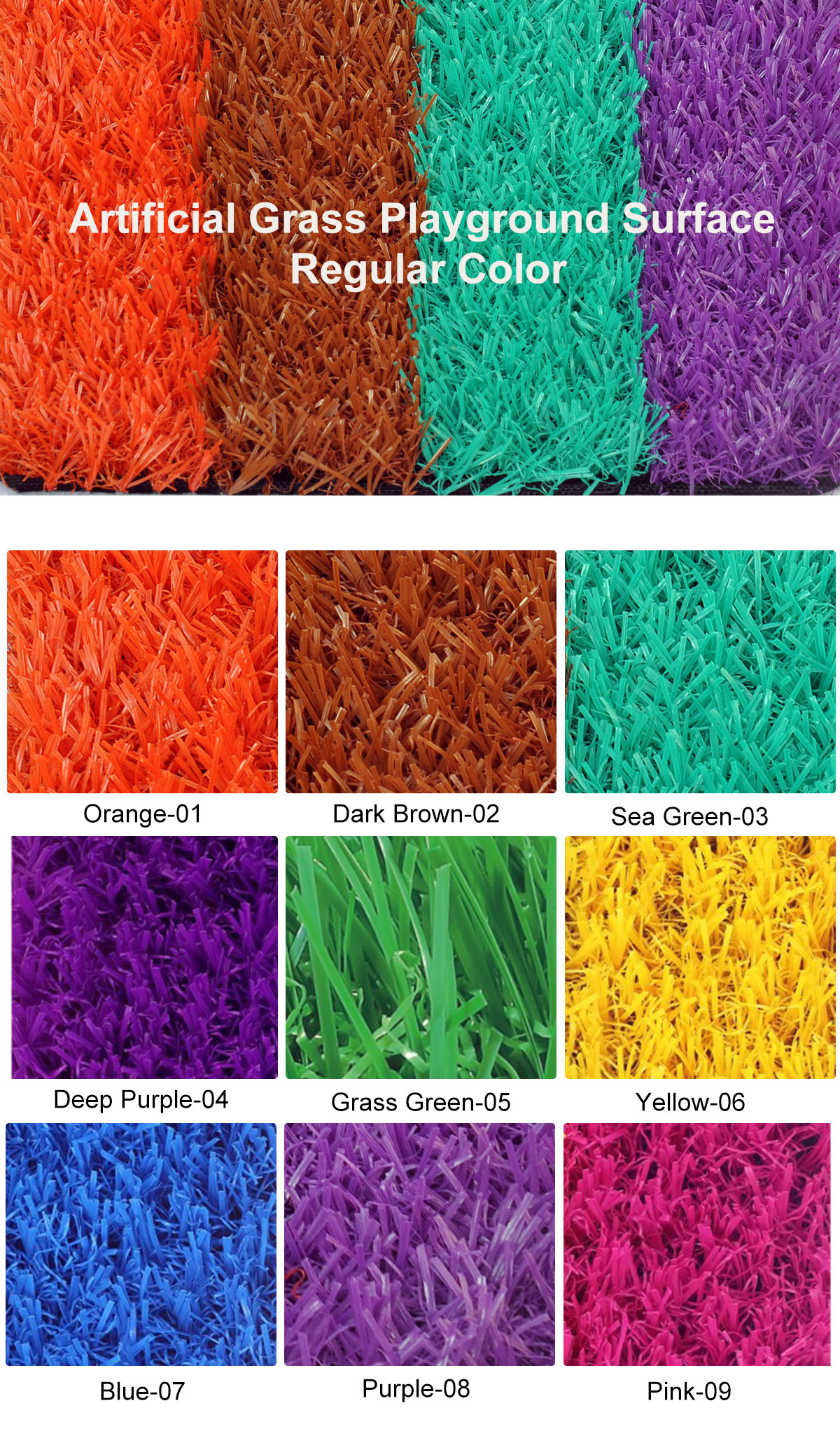
NU-DM004
| Availability: | |
|---|---|
| Quantity: | |
Product Description
Our artificial playground surface is made from high-quality materials, offering durability and comfort. The artificial turf for playground surfacing provides a clean, green, and low-maintenance option ideal for any play area.

Product Information
Name | Artificial Grass Playground Surface |
Apply to | Landscape |
Yarn | PE |
Dtex | 8000 |
Backing | PP+non-woven |
Roll Width | 4 or 2 meter |
Packing | PP fabrics |
Gauge | 3/8" |
Yarn Color | 1-tone |
Stitches/10cm | 17/10cm±3% |
Stitches/SQM | 21000±3% |
Roll Length | 25m |
MOQ | 1000㎡ |
Grass Height | 20m |
USD Unit Price/FOB Ningbo | 7.22 USD/㎡ |

Size
Our artificial turf is available in the following main sizes and thicknesses for a wide range of locations.

Color
We offer 9 regular colors of artificial grass to create a fun, engaging, and safe space for children.

Physical Show
Our safety surfacing for playgrounds features high-quality artificial turf, providing a durable and soft landing for children. Perfect for any play area, our surfaces ensure both fun and protection.
Artificial playground surface-1
 Artificial playground surface-2
Artificial playground surface-2  Artificial playground surface-3
Artificial playground surface-3 
Installation process
1. First of all assess how much grass you will need. Mark off the area to be measured - it can help to mark it with some sort of spray can as this helps to show exactly how the grass will lie.
Note: We manufacture rolls in 2 widths: 2 meters (6 feet 6 inches) or 4 meters (13 feet 1 inch)
2. Remove the grass sod by hand for smaller areas or by using a turf cutter for larger areas.
3. You should compact the ground, using a vibrating plate which can be hired at an equipment hire centre.
4. Apply a geo-textile weed barrier to the base.
5. Lay the sub base. This material is designed to level the area. Typically a 6mm (inch) stone aggregate is used (exactly what landscapers use under paving bricks). Between 25mm (1 inch) and 75mm (3 inches) should be enough. This can also be a good point to stop and put in place timber edging if you plan to use that - eg. an edge board (tanalised timber & wooden pegs). Ensure it's not higher than the final grass line, otherwise water run-off will be hindered.
6. Spread and compact the sub base. Ideally use the vibrating plate mentioned in point 3.
7. Lay the base material - a fine layer of sand with less than 6mm (� inch) depth should suffice. Note: Ideally there should be a very slight slope on the base.
8. Lay the artificial grass on top of the sand (as opposed to dragging it onto the base material) and leave for around 2 to 3 hours to settle. This helps stop any wrinkling or creasing.
9. Cut and trim your artificial grass, using a sharp Stanley Knife.
10. Make the joins using the correct type of seaming tape and glue - only quality outdoor tape and glue should be used. We recommend you purchase this from us when placing your order.
11. Apply the infill as specified. Typically a sand mix will be used. Rake and spread the infill evenly, taking care not to over fill the surface. Note: Application of sand is best on a dry day. Remember that the infill will eventually compact so you should consider adding a final layer when settled.
12. Apply any natural stone, paving or log roll edgings you've selected. If you've chosen not to use edgings, then apply landscaping nails every 50mm (2 inches) or so.


FAQ
Q: What are the benefits of using artificial turf for playground surfacing?
A: Artificial playground surfaces provide a safe, durable, and low-maintenance option for playgrounds. They offer consistent shock absorption, reducing the risk of injuries, and can withstand heavy use and harsh weather conditions without deteriorating.
Q: Is artificial turf safe for children?
A: Yes, artificial turf designed for playgrounds meets stringent safety standards, ensuring a cushioned surface that helps protect children from falls and injuries.
Q: How long does artificial turf last on playgrounds?
A: With proper maintenance, artificial turf can last 8-15 years, making it a cost-effective choice for playground surfacing.